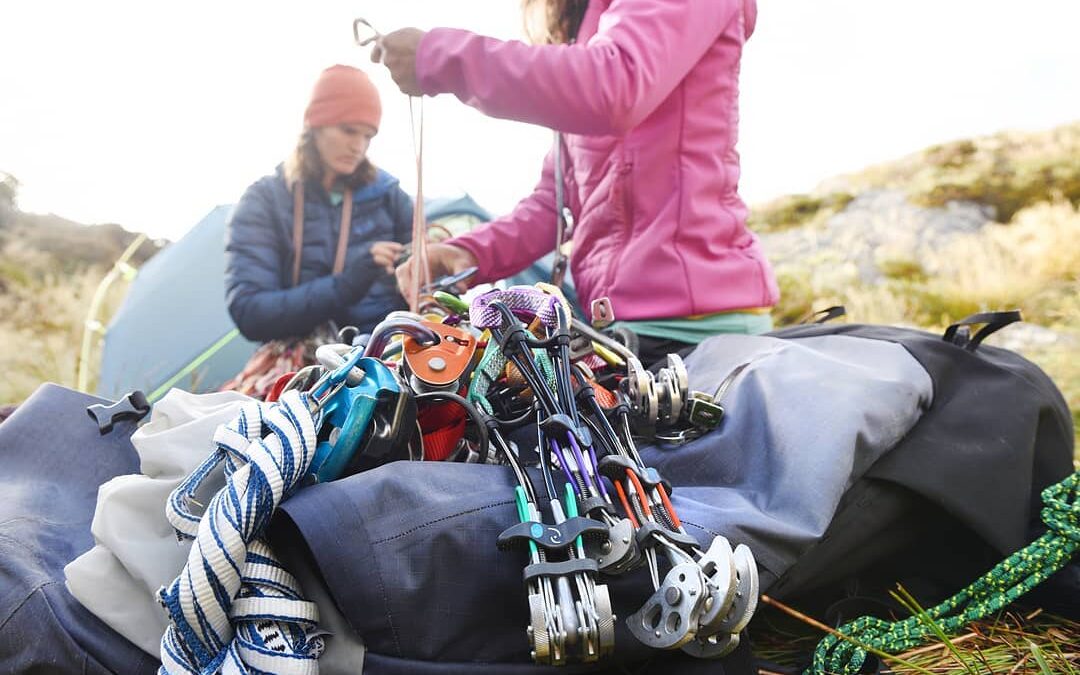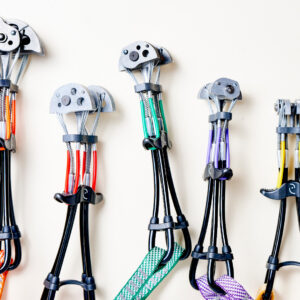Climbing Protection Gear Tips to Help You Learn From the Mistakes of Others
Trad climbing is one of the most rewarding disciplines in the sport—but it also comes with serious risks. Unlike sport climbing, where bolts are pre-placed, trad climbers must assess rock quality, place their own gear, and trust their placements with their life.
Unfortunately, mistakes happen—sometimes with dangerous or even fatal consequences. But the good news? Many common trad climbing mistakes are completely avoidable.
In this guide, we’ll cover the 9 biggest trad climbing mistakes that could cost you your safety, your gear, or even your life—and how to avoid them like a pro.
1. Poor Cam Placements (The #1 Cause of Gear Failure!)
One of the biggest mistakes new trad climbers make is placing cams incorrectly.
Climbing Protection Gear: Common Cam Placement Mistakes
❌ Under-cammed (too open) → Less holding power, more likely to pull out.
❌ Over-cammed (too closed) → Hard to remove, reduces holding strength.
❌ Placed in soft or loose rock → Rock may break under load.
❌ Not aligned with the expected fall direction → Can cause the cam to shift or walk.
How to Avoid It:
✅ Use the right size—cams should be 50-70% retracted in the crack.
✅ Test your placements—gently tug on the cam to ensure it’s solid.
✅ Look for solid rock—avoid placing gear in fragile or hollow rock.
✅ Use Totem Cams for marginal placements—their Direct Loading System grips better in flared cracks and pin scars.
💡 Pro Tip: Take a trad climbing course or practice on the ground before leading a route.
2. Not Extending Your Placements (Cam Walking Disaster!)
Ever had a cam “walk” deeper into a crack, making it impossible to retrieve? That’s because you didn’t extend your placement enough.
Why This Happens:
- Rope drag causes movement.
- The cam stem is too rigid.
- Short draws create an upward pulling force.
How to Avoid It:
✅ Use alpine draws or slings (60cm) to reduce movement.
✅ Place the cam deep enough so it doesn’t shift under load.
✅ Use Totem Cams—their flexible stems reduce walking compared to stiffer cams.
💡 Pro Tip: If you’re climbing a wandering route with zigzagging gear placements, always extend your cams to prevent rope drag and movement.
3. Ignoring Your Gear’s Lifespan (Yes, Cams Wear Out!)
Climbing gear doesn’t last forever, and failing to retire old, worn-out gear can lead to catastrophic failure.
Signs Your Climbing Protection Gear Needs Replacing:
🔍 Frayed or discolored slings (replace every 3-5 years).
🔍 Bent or cracked cam lobes (time for a new cam!).
🔍 Stiff trigger wires or broken springs.
🔍 Carabiners with sharp edges (can damage ropes!).
How to Avoid It:
✅ Inspect your gear before every climb—especially cams and slings.
✅ Send your Totem Cams in for reslinging when needed.
✅ Replace cams or nuts if they show signs of extreme wear.
💡 Pro Tip: Don’t buy used trad gear unless you 100% trust the seller—you never know its history!
4. Bad Nut Placements (Passive Protection Gone Wrong!)
Unlike cams, nuts don’t have moving parts—so their security depends entirely on how well you place them.
Common Nut Placement Mistakes:
❌ Placing nuts in flared or smooth cracks—less friction = higher chance of failure.
❌ Not wedging the nut properly—can pop out under load.
❌ Placing nuts in soft rock—can cause the placement to crumble.
How to Avoid It:
✅ Look for constrictions in the crack where the nut can’t pull out.
✅ Tug the nut firmly but not aggressively to test its placement.
✅ Use offset nuts for flared cracks.
💡 Pro Tip: Carry a nut tool—proper nut placement is great, but you need to get them out later!
 5. Not Having Enough Gear for the Route
5. Not Having Enough Gear for the Route
Running out of the right cam size in the middle of a pitch = panic mode!
How to Avoid It:
✅ Check the route beta before climbing—know what gear you need.
✅ Bring double or triple racks for crack-heavy routes like Indian Creek.
✅ Use a mix of cams and nuts to maximize options.
💡 Pro Tip: If you’re low on a key cam size, look ahead and conserve your placements strategically.
6. Poor Anchor Building (A Dangerous Way to End a Pitch!)
A weak or unbalanced anchor can fail under load, putting you and your partner at risk.
Common Anchor Mistakes:
❌ Using just one piece of protection—always have redundancy!
❌ Uneven load distribution—can cause gear to shift.
❌ Not extending placements—creates unnecessary rope drag.
How to Avoid It:
✅ Follow the SERENE Anchor Principles:
- Strong (each piece can hold a fall)
- Equalized (load is evenly distributed)
- Redundant (at least 2-3 pieces of gear)
- Extended (minimizes rope drag)
- No Extension (if one piece fails, others hold)
💡 Pro Tip: If you’re new to anchor building, practice on the ground before doing it on a route!
7. Not Protecting the Crux (A Recipe for a Ground Fall!)
A common mistake among beginner trad climbers is failing to protect the hardest moves of a route properly.
How to Avoid It:
✅ Place protection before making committing moves.
✅ Look ahead and plan your placements before you climb.
✅ If in doubt, place extra gear!
💡 Pro Tip: A well-placed cam before the crux gives you the confidence to commit to the move.
8. Forgetting About Rope Drag (Don’t Make Climbing Harder Than It Already Is!)
Ever felt like you’re dragging an anchor up the wall? That’s rope drag, and it can turn an easy pitch into a nightmare.
How to Avoid It:
✅ Use alpine draws on cams instead of standard quickdraws.
✅ Route your rope carefully—avoid sharp edges and zigzagging.
✅ Look ahead and extend placements when needed.
💡 Pro Tip: Rehearse your gear placements before starting a pitch to minimize the risk of bad rope drag.
9. Rappelling Incorrectly (One of the Most Common Climbing Accidents!)
Many climbing accidents happen on the descent, often due to rappelling mistakes.
How to Avoid It:
✅ Always use an autoblock backup (Prusik, Klemheist, or VT Prusik).
✅ Tie stopper knots in the ends of your rope.
✅ Check that both ropes are threaded through the belay device correctly.
💡 Pro Tip: Before weighting the rope, test your rappel setup by bouncing lightly.
Final Thoughts: Climb Smart, Stay Safe
Trad climbing is all about placing your own protection and trusting your gear—but avoiding common mistakes is just as important as placing solid protection.
Quick Recap: Avoid These Trad Climbing Mistakes
✅ Place cams correctly (50-70% retraction).
✅ Extend gear to prevent cam walking & rope drag.
✅ Inspect & retire gear before it fails.
✅ Build strong, equalized anchors.
✅ Protect the crux so you don’t risk a dangerous fall.
📢 Need bomber protection? Check out our Totem Cams—trusted by trad climbers worldwide!

